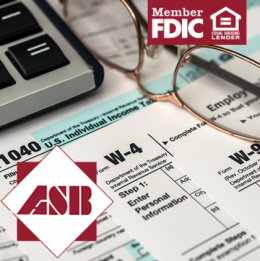
If you don’t know much about CDs or IRAs, today is your lucky day. American State Bank is answering a handful of questions you may have wondered so you have a better idea of what you’re getting into. Both CDs and IRAs are extremely beneficial to your financial future, so let’s jump right in!
Q: What’s the difference between a CD and an IRA?
A: A CD, or certificate of deposit, is a way to boost interest while investing your money in a safe way. They allow your savings to grow at a faster rate than they would in a savings account. An IRA, or Individual Retirement Account, allows you to save for retirement in a tax-advantaged way.
Q: How does a CD work?
A: When you purchase a certificate of deposit, the bank will guarantee you a rate of return based on the length of the term and the amount. The money remains locked in the CD for the term period.
Q: Can you cash a CD out before the end of the term period?
A: In most cases, cashing out early results in penalty based on the length of the term and how early you cash out. For example, if the term is two years, the early-withdrawal penalty is 12 months of interest; if the term is four years, it’s 18 months interest, and so on.
Q: Are CDs safe?
A: The Federal Deposit Insurance Corporation (FDIC) insures CDs up to $250,000 per account owner, so CDs are primarily a safe investment. For more information on FDIC deposit insurance, you can visit: https://www.fdic.gov/resources/deposit-insurance/
Q: What types of IRAs are there?
A: The two most common IRAs are the traditional IRA and the Roth IRA. The main difference is that with a Roth IRA, you contribute after-tax dollars, and your money grows tax-free, while with Traditional IRAs your money grows tax deferred.
Q: How much am I allowed to contribute to my IRA?
A: For 2020 and 2021, you can contribute as much as $6,000 to an IRA, or $7,000 if you’re 50 or older. These limits apply to your total contributions, so if you have more than one IRA your total has to be under the limit.
Q: Can I borrow money from my IRA?
A: The IRS says, “If the owner of an IRA borrows from the IRS, the IRA is no longer an IRA.” That being said, the answer is no, not really. The IRS allows you to withdrawal money from your IRA if you redeposit it into a qualified retirement account within the next 60 days, which is known as the rollover rule.
Visit our website to learn more about CDs and IRAs or to apply today. If you have any further questions, we’re here to help! Contact us and we’ll assist you in any way we can.










